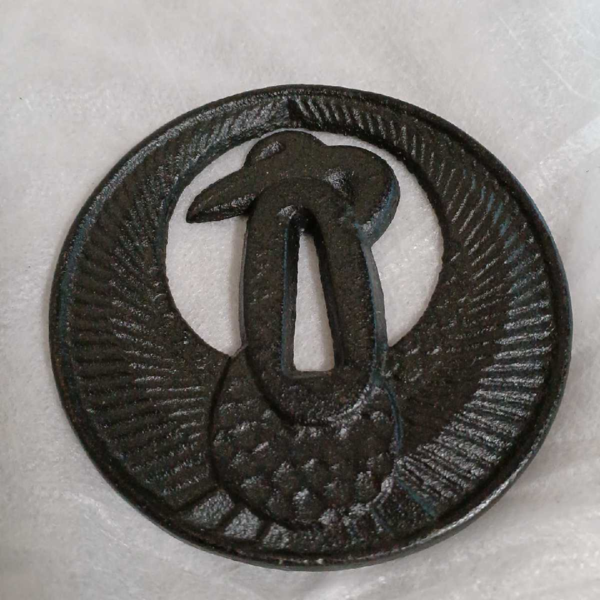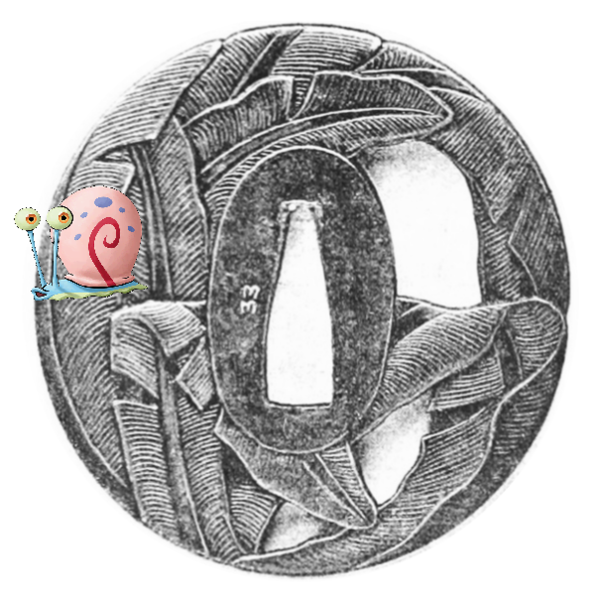-
Posts
3,698 -
Joined
-
Last visited
-
Days Won
100
Content Type
Profiles
Forums
Events
Store
Downloads
Gallery
Everything posted by Spartancrest
-
Another aoi and screens https://www.jauce.com/auction/t1042781098 this one looks pretty good. What started as a fairly obscure design has blossomed into quite a few variations.
-
Ebay is having a run on these! https://www.ebay.com.au/itm/165381229071 Some without the eye makeup! But still ten times the price. on ebay also, there is a Katamenuki https://www.ebay.com.au/itm/255413766945 looks genuine to me.
-
I don't usually promote cast guards but this one is at least reasonably priced for what it is - https://www.jauce.com/auction/m1042552782
-
Very expensive drink coaster - that will likely spill your drink into the bargain ! https://www.jauce.com/auction/u1042220390 50,000 yen - yeah right!
-
Hey these are starting to come out of the woodwork! https://www.jauce.com/auction/b1042202823 This one looks cast to me, I don't like the look of the hitsu at all.
-
-
Roger you might be correct but how then is it that both sides of the tsuba have identical images, wouldn't that require enormous precision indeed, much much more work than hammering into a form? Not that I am an advocate for both sides being identical, it is rather boring. Surely there are examples where each side was made as you have described and they would have the freedom of two similar designs but not identical. There must be examples out there so please show us. [meaning the members] Is it once again a story of two 'levels' of construction, custom pieces and cheaper mass [but hand] produced?
-
A nice one in Yamagane? Shibuichi? Looks like it was cleaned with steel wool? https://www.ebay.com.au/itm/125189054246
-
There is a another guard on ebay right now. https://www.ebay.com.au/itm/373967970257
-
Hi Jeremy there is a good thread found here: There are many thoughts on the subject, it will often depend on whether your guard is just iron or if it has inlays/overlays etc.
-
I have found this extract from "Sculpture on Sword-Furniture" by Captain F. Brinkley [1902] Here he is describing the work of the Goto masters. "--In short, these records show that the first six Goto masters had a very large repertoire of subjects, and that it is altogether a mistake to speak of their productions as severely classical, or of their range of decorative motives as limited. They differed, of course, in the quality of their work, the third representative, Joshiu, being notably the coarsest and roughest chiseller among them. It is a theory implicitly believed in Japan that an artist's moral nature is reflected in his productions. Joshiu was a big, stalwart soldier. He fell in battle, the end he had always desired, and there is certainly something of the bluff man-at-arms in his style of carving. His most elaborate effort is said to have been a pair of menuki in the form of a procession of golden ants carrying silver eggs. But he preferred fierce dragons and angry shishi. His son Kwojo, the fourth representative, who worked from 1550 to 1620, is distinguished for precisely the quality which his father lacked, extreme accuracy of detail and delicacy of style. Up to Kwojo's time, that is to say, during the era of the first three Goto masters, the iroye (literally, colour-picture) process, or "picking out" with metal different from that of the general design, was somewhat clumsy. The preparation of efficient solder not being understood, the expert had to pin each tiny plate of gold, silver, or copper in its place. He accomplished this with such dexterity that the rivets were not visible, but really delicate work could not be done. In Kwojo's time a solder was discovered so good that a piece of metal fixed with it could be afterwards chiselled in loco. The use of this 'ro' (literally, wax), as the Japanese called it, made an immense difference in the quality of detail chiselling, and the uttori iroye (riveted plating) of the first Goto experts was finally abandoned. It is unnecessary to enter into any further analysis of the Goto masters' work. ---" This would indicate 'ro' or solder [as we know it] appeared between 1550 to 1620 which is pretty early. The information does not detail the use of solder on Sanmai construction but does point us to a date where it could have been used from.
-
I found this extract from an article dating to 1889 The Portfolio; by Philip Gilbert Hamerton. published 1889 SOME Japanese SWORD-GUARDS. "More rarely we meet with the leaves of the banana or plantain ; amongst many thousands of guards which we have examined four only were decorated with the majestic foliage of this tropical plant. The best of these, the work of Naokatsu, is represented in fig. 2 ; the reverse of this piece, though equally fine and free in treatment, is quite different in the arrangement of the material." A. H. Church. I cannot explain why the article was ascribed as by Philip Hamerton then signed by A.H. Church? It was Church's tsuba used in the print [same guard as above now in the Ashmolean museum] As the article states only four examples were known, I cannot believe these are the four already seen in museum collections - surely others exist in private hands?
-
Roger you didn't dream it - but like you, I can't find the reference either - - yet. I will keep looking.
-
Chris - you should have waited a bit till after the auction - now everyone will be after it! I have a saying "keep it quiet keep it cheap!" It is a remarkable piece and I am sure others have noticed it - I have put it in my 'Watch someone else buy it list'
-
Curran, actually it was Geraint who pointed out that it was Sanmai [Bob is asking the question] Do we know how the separate plates stay put within the fukurin without pins or rivets, was a solder ever used? I realize that once mounted it would be fixed in place by the nakago, so was it really an issue unless it was unmounted?
-
Bob, Is it possible to see some better images, side view of the nakago-ana/hitsu I can't make out any layering if it is Sanmai? If Sanmai the condition is pretty good, usually the top and bottom layers are very thin and show crushing or wear through, the design on yours is identical both sides, so that would suggest the hitsu was cut out after construction else the hitsu would cut through the dragon designs both sides. Pretty close to the dragon design in the link supplied by Geraint [but not identical].
-
JL. Please be aware there is a growing trend of 'proxy' sellers on ebay - they either sell on behalf of another or sell at a raised price then obtain the object for a lower price, pocketing the profit. There are three sellers of the one guard at the moment - you will notice the identical image is used.
-
JL. The sacred cranes are a symbol of good luck and longevity because it is said they live 1,000 years., The Sun rise [could equally be Sun set?] might tie in to a popular scene of 'Husband and Wife rocks" at Futami bay. Though there are no rocks shown on that guard and may just be a seaside view. In my opinion you won't get very much for the guard, there are hundreds if not thousands and they only sell by giving false information to unsuspecting buyers. I would keep it as a reminder of your visit [It is after all a souvenir]- and please believe me, there are very few on this forum who have not owned something similar, though they may now deny it! It is all a part of learning. similar tsuba sell very cheaply - https://www.jauce.com/auction/h1040306457 for $40 AU.
-
-
JL, you can at least be thankful your copy is in pretty good condition, there is another on ebay that is in very much poorer condition. https://www.ebay.com/itm/154886722416
-
-
If you are going to sell a fake or a copy - make sure you don't try selling it in the same week as an original [well it may be?] https://www.jauce.com/auction/g1040967621 https://www.jauce.com/auction/m1041114148 https://www.jauce.com/auction/t1040720200 Three copies, and ugly cranes at that! Two are reputed to be by Kano Natsuo [if true he was having a really really bad day!]
-
I just found a fantastic Shishi tsuba going to auction - https://www.jauce.com/auction/1040944781 The same design is found in the Chōsen Gafu book [p.56] - I can't work out if the Ura view is a Shishi emerging from waves or clouds? I do think the placement of the design on the guard is better than on the drawing. It simply meant changing the hitsu.























